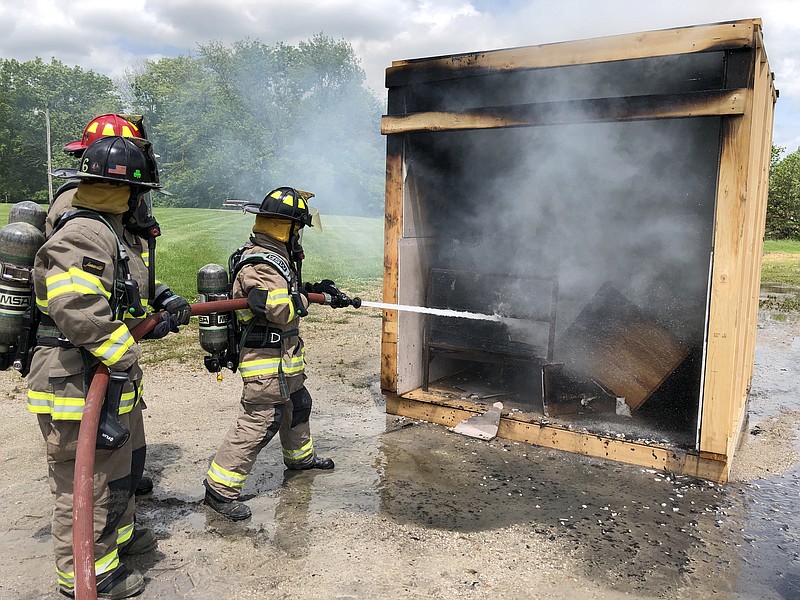Russell Sing could determine the impact by the instinctive reactions.
Sing - the training officer for the Fulton Fire Department - and three firefighters came to Fulton High School on Wednesday and presented a dorm room fire simulation to graduating seniors, some of whom will be going off to college in the fall.
"In looking at their faces, you could tell when it's like a reality that it hits them that, 'Wow, that (fire) is fast,'" Sing said. "You can kind of just see it in their face, which is always kind of nice to see because then it confirms they're learning something."
Sing shared some sobering statistics with the seniors about dorm room fires, including the fact that an estimated 3,800 university housing fires happen each year in the U.S. Sing explained that from 2000-2005, there were 39 deaths and close to 400 injuries due to university fires.
Sing also noted that 92 fatal fires - claiming 132 lives - have been documented from January 2000 to the present that took place on a college campus, in Greek housing or in off-campus housing within three miles of the campus.
Wednesday's simulation became a hands-on experience for Fulton senior Kayanna Gaines and science teacher Liz Schwab. Both donned firefighter apparel and equipment, then eventually extinguished the blaze in the dorm room model.
Once the fire was set, the temperature quickly climbed to 800 degrees and then shot up to 1,200 degrees before it was doused.
"It was cool to have that much power with the water," said Gaines, who will attend Missouri Southern State University in Joplin this fall. "It's scary to think about how quick it just starts going, the fire was so quick. Once it started going, it just took over.
"It makes me think differently of firefighters and all that they do."
Sing pointed out that the five leading causes of campus-related fires include cooking with hot plates, microwaves and portable grills, arson, careless smoking, unattended candles, and overloaded extension cords, power strips and outlets.
Of the 92 fatal fires that Sing referenced, 14 were intentionally set, 38 were accidental and the causes of the other 40 were never determined.
Using Wednesday's simulation as an example, Sing emphasized how swiftly a fire can escalate in a confined space.
"I think just seeing how quick a fire can grow kind of shows (the students) reality," Sing said. "Just being able to feel the heat when you're out in the open space, feel how hot it is from 25, 30 feet away, they realize how bad it could be in an enclosed building.
"A fire doubles in size every minute, so you're looking at a full room catching fire in just a matter of minutes."
Sing stressed that educating the public about the dangers of any type of fire is imperative for the Fulton Fire Department.
"I know throughout my career I've had people come up to me and say, 'Hey, we had a fire and I remember some of the (prevention) stuff that I was taught,'" Sing said. "Having that feedback makes you want to get out and do more like this.
"It also confirms that what we're doing is very important."

